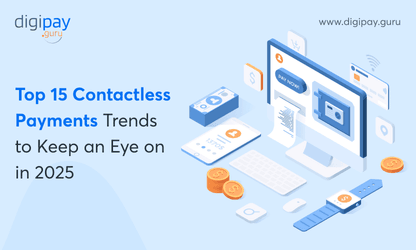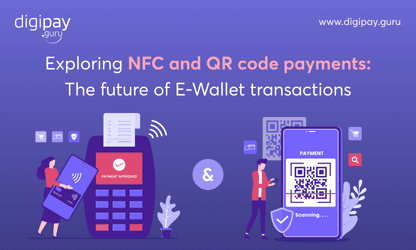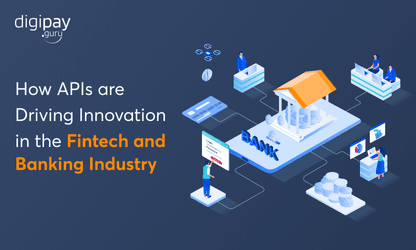The electronic form of money has become popular in the market due to its convenience, speed, and ease. With the increasing number of smartphones across the globe, an upsurge has been witnessed in the usage of mobile financial solutions like mobile payment systems or digital wallet solutions.

People have started migrating to digital wallets from traditional debit cards and credit cards for their payment needs. Still, there are a few people who feel that the digital wallet is not a safer mode of payment.
However, there are some secure digital wallets such as Google Pay, Apple Pay, and Samsung Pay that are used globally. But we cannot ignore the security threats that it may pose. So before investing in a digital wallet solution, you need to look at the potential threats they may pose.
In this blog, we will discuss the potential user threats of mobile wallet applications. Also, we will show you effective ways to solve them.
Classifying technological threats
It is essential for you to first understand the flow of technological threats to prevent them in a better way. Also, you have to organize these threats as per the amount of risk in them. Here is the classification of technological threats:
Modification
Modification happens when an unauthorized person tampers the system information without the user’s permission. For example, someone might alter a program or change the database value so that it performs an additional computation, or modify data being transmitted electronically.
Disclosure
Information disclosure is an unintentional leakage of sensitive information to users by the website. This information leakage may include the following things:
- Sensitive data of users such as usernames or the credit card data
- Important business data
- Website’s structure and its essential technical details
Fabrication
Fabrication is the process of entering data into the database unofficially. In this type of attack, a fake message is circulated into the network by an unauthorized user who is disguised as a valid user. This can compromise the integrity and confidentiality of the data.
Interruption
In an interruption, an asset of the system gets lost or damaged. Malicious destruction of a hardware device, deletion of a program or data file, or the malfunctioning of the system file manager, etc. are the examples of interruption.
Interception
An interception means unauthorised access of assets such as a program, or a computing system. Illicit copying of data files and wiretapping are examples of interception.
The potential risk for wallet apps
Today, we are using mobile wallets for making payments for food, groceries, medicines, taxis, etc. Now you do not have to carry your heavy wallets while going outside. You can easily make payments by using a mobile payment app. Although wallet apps have made our lives easier, they still possess some threats. Here are the potential security threats for mobile wallet app :
Social Engineering
Social engineering is an emerging security concern of today’s time. It is an act of manipulating people for fraudulent purposes. Today, cybercriminals are misusing the personal information of customers for carrying out fraudulent transactions. No matter how careful your IT department is, some of your employees may become the target of such attacks as attackers can easily steal the identity of their colleagues.
To prevent this issue, you can use an Enterprise Mobile Management (EMM) secure browser. Also, you can whitelist or blacklist malicious domains or websites to decrease the chances of its usage for your customers.
Phishing attacks
The phishing attacks are the most common security threat for mobile payment solutions. In phishing, attackers send an email or SMS that lures people to hand over personal information.
To fight against this security issue, organisations can make strict procedures for the employees to follow in dealing with the clients. Also, you should instruct your employees to alert your risk management team if they spot any red flag.
Malware attacks
Malware attacks are one of the biggest threats to personal computers and laptops. But today, it is not just limited to PCs and laptops, it has also entered into the mobile phones. Ransomware, Trojans, adware, etc. are some of the popular malware attacks.
The best way to secure your mobile finance solutions from malware attacks is to use antivirus software that is integrated with an EMM solution. An integrated antivirus solution can help you with scanning and deletion of malicious files. Also, you can provide a list of the approved apps to your customers to prevent them from unauthorized app downloads.
Oops, your phone is at risk!
Securing mobile devices is not just about virus protection but it has been concerned with improving your mobile security practices. As a business, you have to cut down the embarrassing breach that ends with your internal data published for the world to see. Here are some issues that can affect your mobiles:
Data leakage
It is not necessary that every security threat can be external, it may also arise from the company’s resources. Data leakage is one such threat that can be created with the stolen credentials of employees. These data leakages can create significant issues for the company’s reputation and brand image.
For sorting this issue, you can use several authentication modes such as biometric identification and one time passwords to confirm the end-user’s identity. Also, you can try certificate-based authentication to establish trust between the devices and the EMM server. Apart from this, you can separate the personal and work-related apps to prevent unauthorised data sharing.
Targeting Mobile devices
Mobile devices are more prone to the hacking attacks as they are easy to hack compared to a mobile app. Hackers can easily use mobile devices to do illegal activities such as fraudulent transactions, misusing sensitive data, spyware installation, etc.
Now you do not have to worry much as you can easily troubleshoot this issue in a few steps. First, you need to keep your operating softwares up to date. Second, you need to ensure to keep strong security controls in your devices. Use PINs and biometrics to lock your phones to prevent it from unauthorized access.
Spyware
The word Spyware was used for the first time in the year 1995. It was first popped on Microsoft’s Usenet. After then, spyware has been detected frequently in various company’s systems. It can be a potential threat to your financial solution as well. But before we look more into this, let us understand its meaning first.
Spywares get loaded first as a program on your device, so it becomes tough for you to catch them. Spyware monitors all your activities, location, and payment information. Apart from these, it enters into the mobile with the installation of fake apps.
In this case, you can make a secure mobile app for your employees. Also, you should instruct your employees to update it from time to time. These updates ensure your employees with the safety of their device.
Network spoofing
Network spoofing is when an unauthorised person attempts to use a computer or mobile phone network to fool other computer networks by taking reasonable identities. Also, it is used by the hackers for Denial Of Service (DoS) attacks.
In Network spoofing, the hacker uses tools to modify the source address of data packets. Thus, the computer thinks that this data packet has been generated from a trusted source and accepts it. As this thing occurs at the Network level, there is hard to detect any signs of tampering.
To avoid Network Spoofing, the monitoring of Internet Network has to be done at a specific period. Use the latest protocol to prevent network issues. In this way, you can incur the Network spoofing issues.
Mobile wallets app concerns
Mobile wallet apps have made it easier for us to pay for anything at any place without using cash. But it has also raised some serious security some important security concerns that need to be considered to avoid frauds:
App tampering
App tampering is kind of a security threat where the hackers gain access to user’s login details. After gaining access, they will send this data to their servers so that they can use it to cheat the users. Also, the attackers can easily download the sensitive data of a mobile payment app.
To prevent app tampering, you can consider using anti-tampering security systems. Anti tampering systems can prevent the cybercriminals from taking unauthorized access of the app.
Reverse engineering
In Reverse engineering, hackers can use the highly coded passwords and encryption keys for accessing the data. But this is not easy for every hacker, Reverse engineering can be only done by the hackers who possess a higher knowledge of digital wallets.
Now, you do not have to worry about this security threat. You can easily prevent it by taking some effective measures. First, you need to get ProGuard assistance which is an open-source tool for securing mobile apps. Hide your API keys so that no one can access your app resources easily.
Threats that can affect merchants
When consumers do online shopping, they entrust their financial and personal information to your business. Not only do e-commerce companies are answerable to the customers and employees if the data is compromised, but also have to answer to the industry regulators.
E-commerce companies are vulnerable to cybersecurity threats because they access customers’ payment information, email addresses, residential addresses, and usernames and passwords. Cybercriminals use this information for identity thefts and frauds. Also, this sensitive data could be held for ransom by hackers. If you are having an online store, then you have to be aware of the following cybersecurity threats that can harm your company’s reputation:
Dangerous app clones
Google has made its app store criteria more strict to prevent the upload of malicious apps. However, hackers can still find ways of installing malicious payment apps into mobile devices. These apps are directly uploaded on websites or dummy app stores in the form of APK files or the hackers can send their download links via SMS or email.
The most effective method to protect your users from these malicious apps is to clarify that you will only offer your app through the valid app stores. Also, let your customers know that you will discourage the app installed from the other resources.
Attacks on NFC enabled POS
NFC enabled POS is also not safe from security threats. These attacks are also called relay attacks. The relay software can relay responses and commands between the card emulator that is installed as a proxy on mobile POS and a secure element.
To resolve this issue, you have to keep your POS softwares updated. Also, you have to change your POS password regularly. Restrict the access of POS to the authorised users only.
Man in the middle attacks
Man in the middle or MITM attacks are those attacks where the fraudster secretly alters the confidential information between the parties who thinks that they are directly communicating with each other. A MITM attack allows attackers to send, receive and intercept data without the knowledge of concerned parties.
Man in the middle attacks can be prevented in two ways: tamper detection and authentication. Tamper detection is the capability of a device to sense the malicious attempts that compromise the device’s integrity or its data. This threat detection will enable the device to take necessary defensive actions. While in authentication, the security of public keys can get strengthened.
Threats to service providers
Nowadays hackers are using innovative methods to commit payment frauds. Hence sharing threat intelligence and industry-wide collaboration are essential to combat cybercrime. That is why here we round up four e-commerce threats and offer merchant underwriting and monitoring recommendations to counter them:
Payments gateway threats
The payment gateways are considered to be secure but still, they can become an easy target for the hackers. Hackers will compromise the payment data and convey it from the merchant’s side from all banks. This compromise in payment data may damage your business reputation.
To prevent this problem, you need to provide a secure payment gateway to your customers.
Conceding data connectivity
Sometimes, the attackers can misuse the insecure connections to break the security of POS terminals while hosting the PSP terminals. Also, this threat can be transferred to the acquirer from the PSPs.
To solve this issue, you have to fix the vulnerabilities in the data connectivity. Also, you can insert the secure point to point connections between the PSP and merchant POS and the PSP and acquirers.
Issues of S/W on POS
Cybercriminals may attack the payment gateway for breaking the POS terminal’s security. These terminals are provided to the merchants for hosting their networks with PSPs.
Running S/W on contactless terminals
Payment service providers provide NFC enabled POS terminals and advanced payment services to merchants. The payment service processors will process the data from online payments, physical payments and contactless payments.
Threats associated with acquirers
Online merchant acquisition has become a popular business idea due to higher transaction speed and volume. But this acquisition has also created some risks for the acquirers. Today, acquirers are also facing challenges due to the rapidly changing payments landscape. These challenges have made it difficult for merchant acquirers to sustain and grow their business. Let us have an in-depth view of these challenges :
Malware installation
Malware can also get installed by the hackers for carrying out an Advanced Persistent Threat attack. This attack follows a three-step process. First, it would infiltrate the enterprise network. After then, the hackers will enhance their presence within the network. Once the data will get accessed, the thieves will extract it without getting detected.
To stop the attackers from installing malware, enterprises would first have to monitor their visitors’ traffic. Also, they have to control the domains that can be accessed from their networks.
Installation of Rootkits
A Rootkit is a malicious program that provides root-level access to cybercriminals. In short, rootkits is one type of malware that can damage the performance of your personal computer and also puts your data at risk. There are many ways of installing rootkits on a computer such as piggybacking, dropper and loader.
To protect your systems from rootkits, you have to teach your employees about the detection of malicious links and email attachments. Also, you have to instruct them not to open or download files from unauthorized resources. Apart from this, you can also run security scanners to remove active rootkits.
Compromising payment processing systems
Cybercriminals may also harm your payment processing systems by obtaining a large chunk of the cardholder’s data while they are requesting the crypto token from the payment issuer’s network.
For strengthening your payment processing systems, you have to deploy two-factor authentication into your system for secure user access. Also, you need to minimize user access privileges.
Final Words
Mobile devices face a lot of threats but with solutions mentioned in this blog, you protect yourself, your data and your employees. Apart from this, you need to educate employees and give them the tools and information they need to make the right choices.
Also, you can consider making mobile security a compulsory practice so that you can feel confident that your corporate data is safe and secure. As we move further into the digital age, we must do as much as possible to protect devices.
I hope we have provided you with enough information about payment security threats and their solutions. Thanks for reading this blog.






